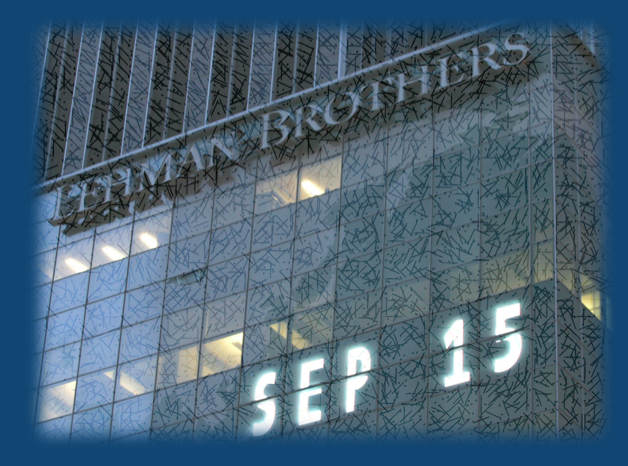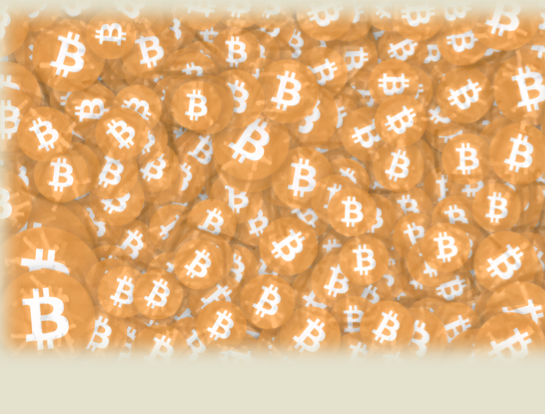Overview
FX volatilities, both realized and implied, are at historic lows as anticipation around the upcoming ECB meeting on June 5th and recent election results in the Eurozone and Ukraine cast a dominant shadow over the FX market.
Since Draghi said he was comfortable with adding stimulus the EUR has declined from a 2 ½ year high. On Monday the ECB President emphasized that the key issue is the timing of any ECB action. Once a catalyst emerges, movement in the liquidity-deprived FX markets may be amplified. According to Bloomberg net Euro shorts have increased to 9,220 on May 20, from 2,175 a week earlier, suggesting that the market is anticipating lower rates from the ECBs meeting next week.
Even though 70% of the vote went to traditional parties in this weeks European Parliament elections, Euroskeptic and other fringe parties had a good showing, particularly in Greece, France and the U.K. In Germany Chancellor Angela Merkels bloc won the most votes receiving 35.5%; but it was their smallest percentage since voters began choosing European Union lawmakers. The Alternative for Germany Party, which wants to dismantle the currency union, took an estimated 7 % of the vote. Expect markets to continue to evaluate the elections ramifications and to watch for signs from the ECB.
USA
The outlook for the U.S. dollar remains mixed in the near term but stronger over the longer term. Data simply hasnt been consistent. U.S. Q1 GDP data showed the economy at a standstill in early 2014, with growth of just 0.1% q/q annualized, while subsequent data hinted at a revision into negative territory. The questions for the Fed remain: when to raise rates, how to get it going and how fast to go once the move does get started?
The USD should slip against commodity and emerging currencies in the near term should global financial markets remain orderly, but should recover in the longer term as Fed rate hikes approach. Technicals show room for U.S. dollar gains vs most majors.
- Durable goods orders unexpectedly increased by 0.8% m/m.
- Core capital goods orders fell by 1.2% m/m.
- Last weeks weekly jobless claims rose more than expected, by 28,000 to 326,000.
- April leading index should rose 0.4% m/m.
- May private manufacturing PMI increased to 56.20.
- May Empire manufacturing survey rose to 19.0 more than expected.
- April core CPI ticked higher to 1.8% y/y.
- April industrial output fell 0.6% m/m.
- Philadelphia Fed index should fell to 15.4 in May less than expected.
Russia (RUB)
In the Ukraine, pro-European candy tycoon Petro Poroshenko declared victory in the first round of their presidential election and Ukrainian forces seized an airport from separatists in aftermath of national elect. With Putins apparent nod of approval last Friday, geo-political uncertainty has decreased and has served to support both the Russian stock market and the ruble. This said; dont expect Ukraine to fall into a peaceful state anytime soon. Nevertheless, with some uncertainties out of the way concerning Russias involvement, expect the RUB to approach its pre-crisis levels and its correlation with other EM currencies to be restored.
- Russias April PPI quickened to 7.2% y/y
- Current USD/RUB rate is 34.3247 Spot.
- Mid implied volatility is 9.65%.
The position below, which was highlighted on 4/22 and the 5/8 commentaries, was closed with a 3.90% net gain, over 67% annualized.
Long RUB forward and Long USD Call/RUB Put, which is a long synthetic straddle. The structure benefits from a discount in the forward rate of the long RUB forward.
- Sell USD/RUB 1-Month forward at 36.2015 for (Get long RUB, which is at a .085% discount to the spot rate).
- Buy 1-Month USD Call / RUB Put with 35.6890 Strike (54.60 Delta).
- Forwards implicit deposit rate is 16.98% annualized, or 1.4150% per month.
- Yield from US dollar cash position 0.24%.
- Downside Breakeven (if the RUB appreciates) is USD/RUB 35.6648.
- Upside Breakeven (if the RUB depreciates) is USD/RUB 36.2257.
- Maximum Gain: Unlimited through RUB appreciation or depreciation vs. the USD.
- Maximum Downside: 1.52% of invested USD amount.
China
While the slowdown in Chinese growth continues, it may be nearing an end. Chinese authorities have begun implementing targeted fiscal and monetary easing. Chinas manufacturing survey was firmer than expected, and April external trade data and confidence surveys both improved. We shouldnt be too quick call the bottom as evident in April retail sales, which slowed; but, there are clearly hints of some stabilization. The CNY remains highly sensitive to the daily fixing by FX authorities, bottoming in Chinese growth could lead to a gradual CNY recovery.
- China’s initial HSBC manufacturing PMI for May rose to 49.7 from 48.1 for the best reading in 5 months but remains below the boom/bust line of 50.
- April leading index rising 0.9% m/m.
- April retail sales slowed to 11.9% y/y.
- Industrial output slowed to 8.7% y/y.
- April external trade data and confidence surveys improved slightly.
Euro (EUR)
The Eurozone economy is recovering, but inflation remains very low and as European Central Banks rhetoric becomes more dovish, currency concerns increase. The euro has declined 1.4 % in the past month, the worst performer after the Swiss franc among the G10. As weak data continues to emerge from the region supporting the case for ECB easing, expect to see more EUR weakness into the medium term.
Technicals are also leaning negative, and FX positioning indicates room for the euro to continue its decline.
Eurozone
- Flash composite PMI for May is in line with expectations, 53.9.
- May manufacturing PMI eased to 52.5 when 53.2 was forecast.
- Services PMI firmed to 53.5 when 53.3 was expected.
- March current account surplus fell to 18.8B.
- March trade surplus eased to 15.2B with exports falling 0.5% m/m.
Germany
- Q1 GDP grew at 0.8% q/q and 2.3% y/y.
- An Ernst & Young study found that foreign investment in the Germany rose 12% last year.
- May IFO business confidence fell to 110.4
- Composite PMI was steady at 56.1 in May, near the 3-year high.
- Service sector component PMI was up to 56.4 in May from 54.7.
- Manufacturing PMI was down to 52.9 from 54.1, a sharper decline than expected.
- April PPI fell 0.9% y/y.
France
- France PMI composite is down to 49.3 from 51.2.
- Services PMI was down to 49.1 from 50.4.
- French May business confidence was steady at 94.
Portugal, Ireland, Greece and Spain
- Fitch upgraded Greece’s sovereign rating to B from B-minus Its still junk!
- Italys March retail sales fell 3.5% y/y.
- Italys March industrial orders were steady at 2.8% y/y.
- Current EUR/USD rate is 1.3634.
- Mid implied volatility is 6.75%.
- Current EUR/JPY rate is 139.05.
- Mid implied volatility is 6.93%.
Recommended Enhanced Yield structure: Short EUR forward.
- Short EUR/USD forward at 1.3633 for 3-Weeks.
- Sell 3-Week EUR Put / USD Call with 136.00 Strike (39 Delta).
- Forwards implicit deposit rate is 0.00 %.
- Yield from US dollar cash position 0.24%.
- Yield from option premium is 10.58% annualized.
- Structures yield is 10.82% (from forward deposit rate, U.S. deposit rate, and options premium), plus potential capital gain from EUR depreciation to 136.00.
Australian dollar (AUD)
Growth and inflation are on a gradual upswing. The AUD should be supported while global market conditions stay benign, but the currency could reverse when U.S. Fed tightening becomes more pronounced. The RBA is on hold. Central bank minutes from the May meeting said that overall growth in coming quarters will likely be below trend due to slower exports. The bottom line is that the RBAs current accommodative policy stance is likely to be appropriate for some time.
Technicals are mildly positive, and speculative FX shorts have decreased. Markets balanced FX positions offer scope for near-term gains. Expect moderate AUD appreciation in the near-term,
- Australias Q1 wage cost index was steady at 2.6% y/y.
- May consumer confidence fell 6.8% m/m. its lowest level since 2011.
- Q1 wage cost index was steady at 2.6% y/y.
- Current AUD/USD rate is 0.9257.
- Mid implied volatility is 6.70%.
Recommended Enhanced Yield structure: Long AUD forward.
- Long AUD/USD forward at 0.9251 for 2-Weeks.
- Sell 2-Week AUD Call / USD Put with 0.9300 Strike (36 Delta).
- Forwards implicit deposit rate is 1.56%.
- Yield from US dollar cash position 0.24%.
- Yield from option premium 7.30% annualized.
- Structures yield is 9.00% annualized (from forward deposit rate, U.S. deposit rate, and options premium) plus potential capital gain from AUD appreciation to 0.9300.
Great British Pound (GBP)
Strong economic data has increased speculation that the Bank of England will raise rates in the near future, but the BoE policy committee continues to dither about ending QE. The GBP has been the strongest G10 currency over the past 12 months, gaining an impressive 10% versus the USD. The gains have been driven by a strong rebound in U.K. economic growth, the labor market has improved, and surveys show a rebound in sentiment. It should be noted that there are fresh worries about a housing bubble. Nevertheless, the Bank of England remains accommodative to absorb spare capacity in the economy, while slowing inflation provides scope for easy monetary policy.
The next move is likely to be a hike, although not soon. Further gains in the GBP are more challenging given the shift in FX positioning and because rate increases are still some time away.
- GDP up 0.8% q/q and 3.1% y/y.
- Business investment is up 2.7% q/q.
- Household spending is up 0.8% q/q.
- Foreign investment in the UK rose 15% in 2014.
- Net government borrowing was up to £11.5 billion from £9.5 billion the year before
- April retail sales rose 1.3% m/m.
- April CPI firmed to 1.8% y/y.
- Core CPI firmed to 2% y/y.
- Core PPI output prices eased to 1.0% y/y.
- May Rightmove house prices firmed to 8.9% y/y.
- Current GBP/USD rate is 1.6810.
- Mid implied volatility is 4.90%.
Recommended Enhanced Yield structure: Short GBP Forward
- Short GBP/USD forward at 1.6806 for 3-Weeks.
- Sell 3-Week GBP Put/ USD Call with 1.6735 Strike (36 Delta).
- Forwards implicit deposit rate is 0.00%.
- Yield from US dollar cash position 0.24%.
- Yield from option premium is 5.36% annualized.
- Structures yield is 5.60% annualized (from forward deposit rate, U.S. deposit rate, and options premium), plus potential capital gain from GBP depreciation to 1.6750.
Canadian Dollar (CAD)
Consumer prices firmed slightly, but the labor market experienced a setback in April, and housing activity is mixed. Global conditions remain favorable for commodity currencies. The central bank has reiterated a neutral stance, although monetary authorities are not ruling out easing if downside inflation risks emerge. CPI hit the central banks target rate for the first time in two years and the CAD rallied. Expect medium term CAD strength; however, technicals show the Canadian dollar testing resistance levels.
- April CPI firmed to 2.0% y/y.
- Core CPI increased slightly to 1.4% y/y.
- March wholesale sales unexpectedly fell 0.4% m/m.
- March manufacturing sales rose 0.4% m/m.
- April existing home sales rose 2.7% m/m.
- USD/CAD rate is 1.0872.
- Mid implied volatility is 4.83%.
Recommended Enhanced Yield structure: Long CAD forward
- Short USD/CAD forward at 1.0866 for 2-Weeks.
- Sell 2-Week USD Put / CAD Call with 1.0810 Strike (35 Delta).
- Forwards implicit deposit rate is 0.80%.
- Yield from US dollar cash position 0.24%.
- Yield from option premium is 4.54% annualized.
- Structures yield is 5.58% annualized (from forward deposit rate, U.S. deposit rate, and options premium), plus potential capital gain from CAD appreciation to 1.0810.
Japanese Yen (JPY)
The yen is higher as the Bank of Japan held monetary policy steady and did not hint at any further easing. The BoJ seems relatively positive on the performance of the economy with regard to weathering the new consumption tax, as business fixed investment is expected to improve.
Expect a short term pause in JPY weakness, but the potential for further correction exist as leading indicators suggest a decline in activity ahead. There remains a reluctance to provide new governmental measures in the wake of the sales tax increase. Bloomberg suggest that relatively steady U.S. Treasury yields and underperforming Japanese equities should also limit the yens declines.
Technicals are neutral for the yen.
- May manufacturing PMI rose to 49.9.
- May small business confidence rose to 46.6.
- February current account deficit narrowed to ¥41B.
- Japanese trade deficit fell to ¥844.62 billion in April (from ¥1. 1.63T in March)
- Exports up 5.1%.
- Imports up 3.4%.
- March all industry index rose 1.5% m/m,
- Nationwide department store sales fell 12% y/y Looks like a post consumption tax slump.
- April trade deficit narrowed to ¥809B and exports grew 5.1% y/y
- March core private machinery orders jumped 19.1% m/m
- Current USD/JPY rate is 101.67.
- Mid implied volatility 5.47%.
- Current EUR/JPY rate is 139.07.
- Mid implied volatility is 6.93%.
No Position Recommended
Mexican Peso (MXN)
Mexican economic growth in Q1 was not great, although the 1.8 % year-over-year rate was better the 0.7 % reported in Q4 2013. Monetary policy bias is likely to be neutral as inflation has receded back toward the central banks target. Growth is improving, although it is somewhat uneven. Implementation of reforms should result in increased economic activity later this year. Softer U.S. economic data is likely part of the reason for the soft Mexican data. Speculative FX positioning shows an increase in MXN longs, and the technicals indicates further MXN strength
Expect for moderate MXN appreciation in short term.
- Construction industry growth fell 2.8 %.
- Q1 GDP growth was 1.8%, better than expected.
- Q1 GDP increased 1.8% y/y and 0.3% q/q both weaker than expected.
- March economic activity rose 3.0% y/y disappointing.
- March retail sales unexpectedly rose 1.7% y/y.
- Current USD/MXN rate is 12.8566.
- Mid implied volatility is 6.55%.
Recommended Enhanced Yield Structure: Sell MXN Put against U.S. deposit, not a forward.
- Sell 2-Weeks USD Call / MXN Put with 12.95 Strike (33 Delta).
- Yield from US dollar deposit 0.24%.
- Yield from option premium is 7.99% annualized.
- Structures yield is 8.23 % annualized (from deposit and options premium). If option is assigned, result will be long MXN at 12.9350.
Mr. Huddleston has nearly 20 years of financial services experience, with primary expertise in the conceptual and structural development and trading of derivatives. He has also held a range of senior advisory positions working with high net worth and institutional clients, with his most recent role at Wells Fargo focused on the development of customized foreign exchange derivatives for the firm’s ultra high net worth clients. Mr. Huddleston has also held a range of management and trading positions at Capital Markets Trading (Frankfurt), Dresdner Bank (Frankfurt) and Citibank (Frankfurt and Hong Kong). Mr. Huddleston was a member of the Pacific Stock Exchange, where he was an options market maker on Microsoft listed stock options.










































